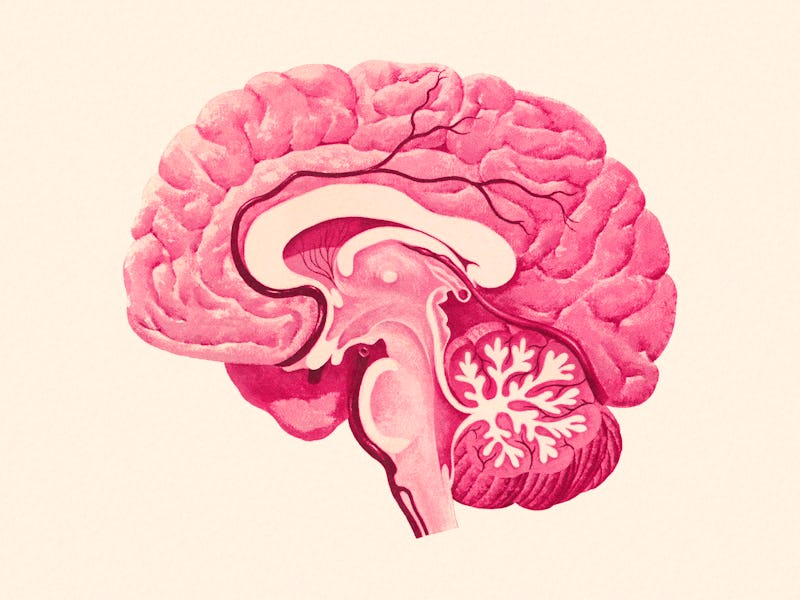Depression study reveals a critical difference between men and women
“Our vision is that one day we’ll have improved, individually tailored therapeutics.”

Unless you are a scientist, you may never have considered RNA — ribonucleic acid found in all living cells — in great detail until the advent of the mRNA (messenger RNA) vaccine against Covid-19.
Fundamentally, RNA enables genes to make proteins. But there are variations on the theme, including a kind of RNA called long non-coding RNA, or lncRNA, which interacts with other RNA, protein, and DNA to play a role in how distant genes express themselves. If that all sounds a bit vague, then know this: Scientists agree that long noncoding RNAs are pretty confusing.
What we do know, however, is that mammalian genomes encode tens of thousands of lncRNAs, and about 40 percent are specific to the brain. And lncRNAs appear more abundant in complex organisms, especially primates. But as to what they do there, the science is a little murky.
“We have absolutely no idea what many of them are doing,” says Orna Issler, an instructor at the Icahn School of Medicine at Mount Sinai.
Because so many lncRNAs are specific to the brain, Issler and her team think they could unlock a new understanding of how the mind works — and especially how all of this relates to depression. Long non-coding RNAs, they suggest, could be a target for new treatments.
One lncRNA dubbed FEDORA is particularly intriguing for Issler. In a recent study, FEDORA was singled out as a potential sex-specific regulator of depression — a discovery that could help explain why women are twice as likely to develop the condition as men. This knowledge may, in turn, lead to improved diagnosis and treatment.
“Our vision is that one day we’ll have improved, individually tailored therapeutics for depression — and potentially different ones for men and women,” Issler says.
Sex differences and mental health
A scientist extracts RNA.
Mental health conditions are caused by a combination of genetic, environmental, and biological factors. This is why molecular mechanisms can’t provide all the answers when it comes to the question of why women are more likely to be diagnosed with depression than men.
But they can offer some clues. Depressed women tend to have slightly different symptoms compared to men, and these may be more severe. They are also more likely to have anxiety and depression.
There are also sex differences in responses to antidepressants. Premenopausal women tend to respond better to serotonergic antidepressants like Lexapro and Zoloft, while men typically respond better to tricyclics like Norpramin and Tofranil. Meanwhile, antidepressants can also cause more side effects in women, especially when taken with different drugs.
Despite these differences, there are no official guidelines for treating women and men differently. This, Issler says, should change if we want to improve outcomes.
“The sex of the patient should be one of the factors we think about when we’re providing treatment,” she explains.
A new understanding of depression
Issler and her team’s study reveals several insights. For example, an examination of postmortem human brain samples shows FEDORA is mostly found in cells related to the nervous system called oligodendrocytes and, to a lesser extent, neurons.
“We opened this Pandora’s box, and we want to find out more.”
They also examined FEDORA in samples of people between the ages of 18 and 65 already participating in a study where they receive ketamine as a treatment for depression. Blood samples show that there were higher circulating levels of FEDORA in women diagnosed with major depressive disorder compared to men and women without depression. Further, falling levels of FEDORA correlate with the degree to which ketamine alleviates the participant’s symptoms.
The study team also genetically engineered mice to express the long non-coding RNA in the prefrontal cortex. Overall, they found an association between FEDORA and the development of anxiety and depression — but only in the female mice.
These sex differences are likely due to genetic differences between the sexes rather than hormones, the team observes.
Now, Issler wants to study the mechanisms driving this connection and probe the potential of other long noncoding RNAs.
“We opened this Pandora’s box, and we want to find out more,” Issler says.
Editor’s note: A previous version of this article misstated mRNA as short for “micro RNA” — it stands for “messenger RNA.” We regret the error.
This article was originally published on